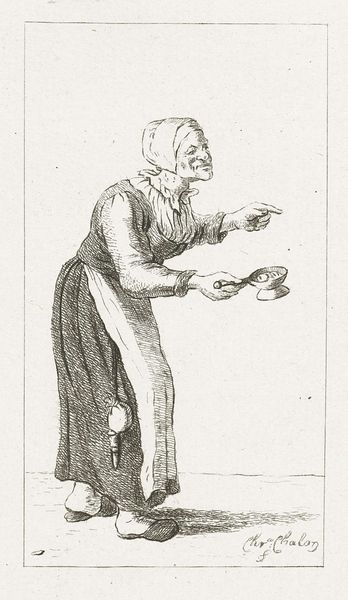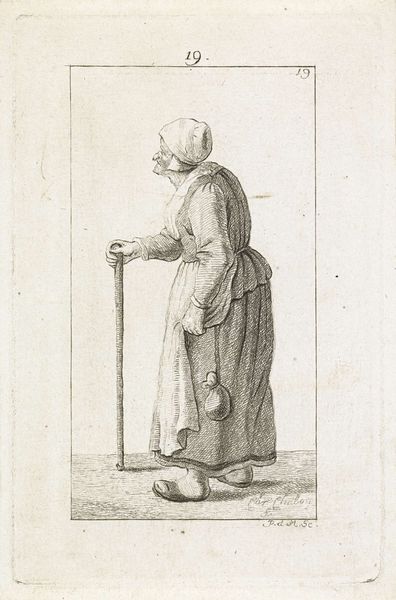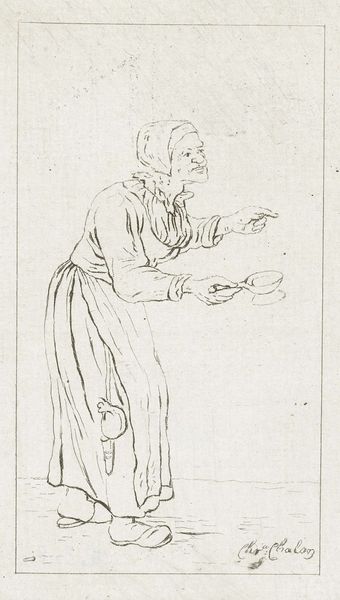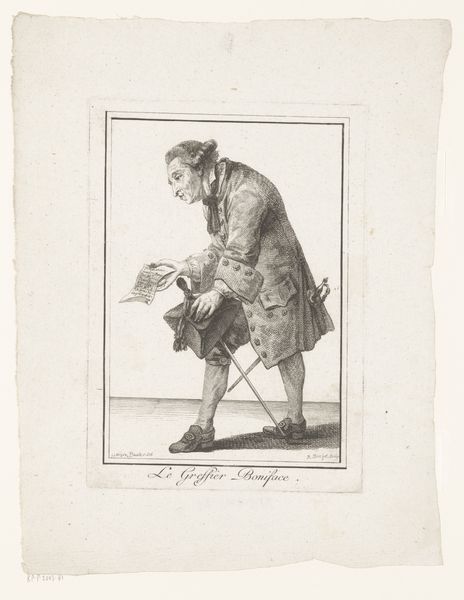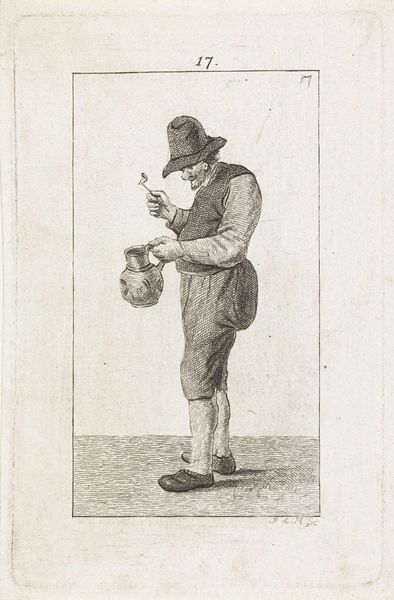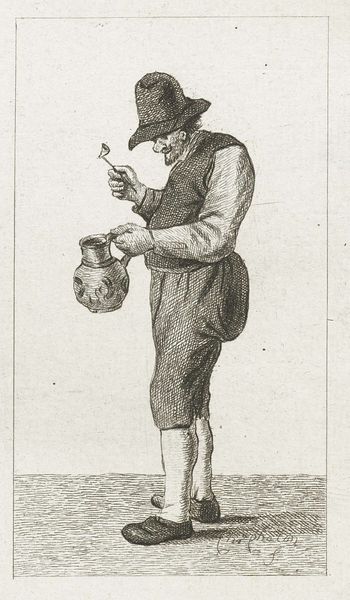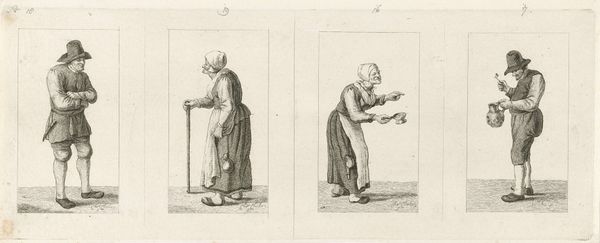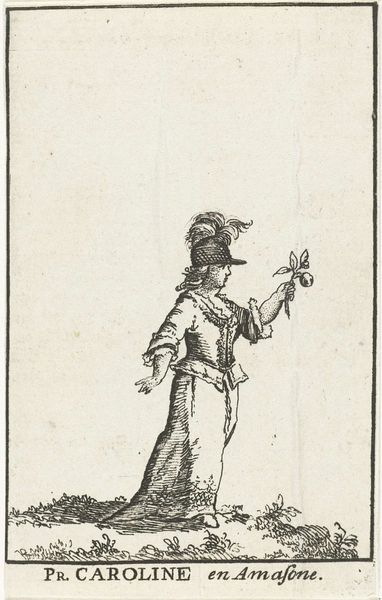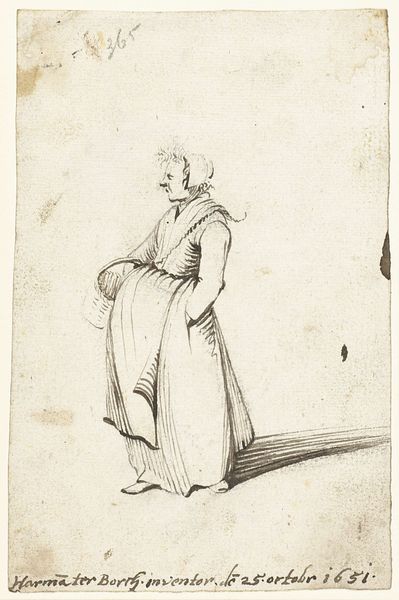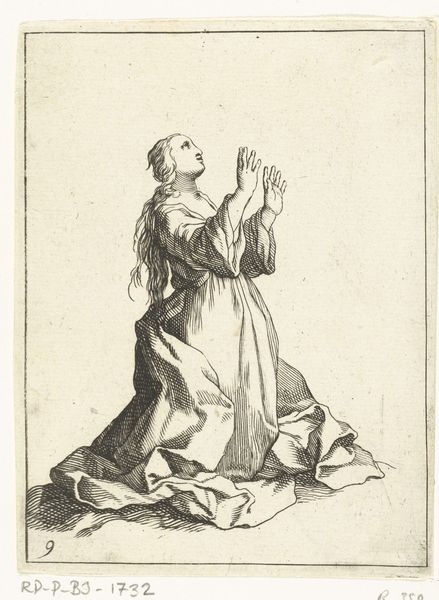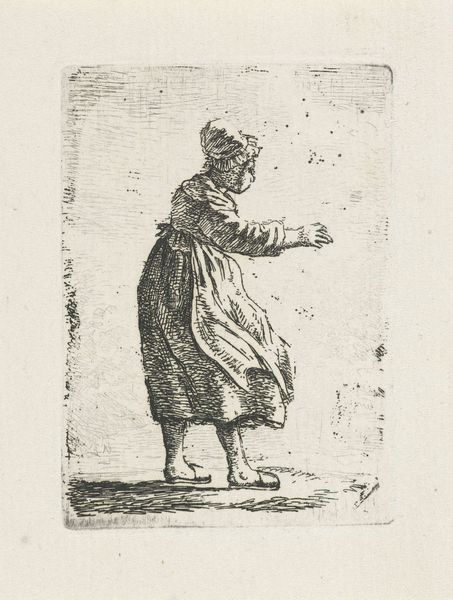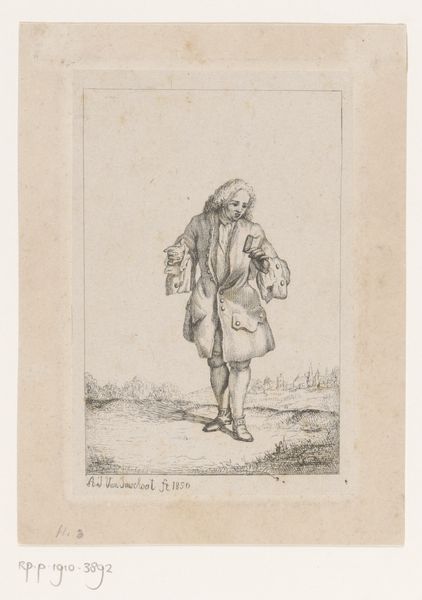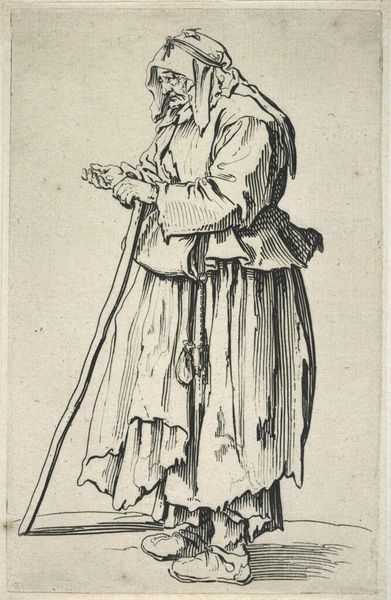
drawing, print, etching
#
portrait
#
drawing
# print
#
etching
#
genre-painting
Dimensions: height 130 mm, width 83 mm
Copyright: Rijks Museum: Open Domain
Curator: This is an etching by Pieter de Mare, created between 1777 and 1779. It's called "Vrouw met een bakje", which translates to "Woman with a Bowl." Editor: She certainly has character! The high contrast and sharp lines give her a wonderfully severe appearance, almost a caricature, and the scale emphasises the subject. She appears resolute, perhaps even defiant. Curator: Precisely! Etchings like these were popular in the 18th century as a way to reproduce images and disseminate them widely. The woman is shown in what we might consider genre painting: images capturing the everyday activities of ordinary people. But I'm drawn to how de Mare imbued her with so much spirit. The way her eyes narrow. Editor: She is pointing, directing. Perhaps accusing? Or simply instructing? Note, too, how her clothing identifies her within the domestic sphere. Her apron, the simple headscarf. It makes me consider the unseen labor typically assigned to women of this period and status, uncompensated, undervalued. Is the object she holds of some value? What's its content? Curator: It does pose questions. While it's ostensibly a genre scene, the almost allegorical quality pushes us beyond mere representation. This woman could symbolize something about labor or commerce of the time; the fact that the bakje appears somewhat like a liturgical chalice can imply certain sanctity even in poverty. I agree it’s ambiguous, as such images do, between idealized and accurate rendering. The thread dangling from her pocket could show a lower social class at a moment of precarity. Editor: The level of detail the artist brings to the face, yet, in contrast, note the simplification of her body and background. It concentrates our focus, underscoring the individual against her milieu. This adds strength to any commentary the artwork might be offering in the world of work, the situation of women. Curator: Exactly. It demonstrates how imagery and symbols work, building a potent narrative—even within a seemingly straightforward image, where cultural history echoes through every carefully chosen detail, don't you think? Editor: Definitely, I appreciate how revisiting familiar archetypes through a social justice lens adds to its rich narrative. It serves as a potent reminder of how much of our received "wisdom" remains up for interrogation and reform.
Comments
No comments
Be the first to comment and join the conversation on the ultimate creative platform.
